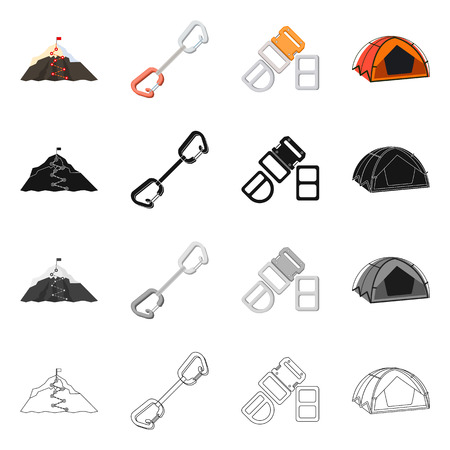Setting the Scene: British Lunch Traditions in the Wild
When you think of a classic British lunch, images of rustic pub tables laden with Ploughman’s Lunches, piping-hot Cornish pasties, and thick slices of cheddar come to mind. These meals are more than just fuel—they’re a celebration of local produce and centuries-old traditions. Yet, what happens when these time-honoured lunches leave the comfort of city cafés and countryside inns, venturing into the unpredictable heart of the wild? Whether it’s a riverside picnic in Yorkshire or a windswept hike across Dartmoor, Britons have long had a knack for transforming humble ingredients into something hearty, comforting, and portable. From Scotch eggs tucked away in rucksacks to pork pies enjoyed on a damp log, these iconic dishes are woven into the fabric of outdoor life. As we embrace the wild with nothing but a campfire and a trusty pot, it’s only natural to draw inspiration from these staples. The essence of British midday meals—robust, satisfying, and unfussy—makes them perfect candidates for campfire cooking. In this series, we’ll explore how classic pub fare and picnic favourites can be reimagined as one-pot wonders fit for any adventure, blending tradition with survival savvy to keep spirits high and stomachs full wherever the trail leads.
2. Gear Up: Essential One-Pot Cooking Kit for UK Campers
Before you can transform a classic Ploughman’s or Cornish pasty into a hearty one-pot campfire meal, you need the right kit—especially in the unpredictable British outdoors. Here’s your no-nonsense guide to gear that’s as tough as a Yorkshire winter and as practical as a London cabbie.
The Core Kit: Built for Britain
| Item | Why You Need It | UK-Specific Tip |
|---|---|---|
| Sturdy Cast Iron Pot (Dutch Oven or Lidded Skillet) | Distributes heat evenly over open flames or gas stoves; virtually indestructible. | Copes with damp British wood, retains heat longer in chilly weather. |
| Portable Stove (Gas or Multi-Fuel) | Reliable cooking when rain soaks your firewood. | Butane/propane mixes perform well even in Scottish Highland winds. |
| Windshield/Shelter for Stove | Keeps flame steady in gusty conditions. | Essential on blustery moors or exposed Lake District sites. |
| Heat-Resistant Gloves | Saves your hands from burns while shifting pots or embers. | Doubles as insulation when handling cold kit on frosty mornings. |
| Long-Handled Spoon & Spatula (Wood or Stainless Steel) | Stirs, scoops, and serves without burning your knuckles. | Wood won’t freeze to your hands on a frosty dawn start. |
| Lidded Storage Tubs | Keeps ingredients dry and critter-free overnight. | Makes prepping for sudden downpours a breeze. |
| Tin Mug & Plate (Enamelled Steel) | Tough enough for rocky ground and hot food straight from the pot. | Doubles up as prep kit and won’t shatter if dropped on Dartmoor granite. |
| Compact Washing-Up Kit (Eco Soap, Scrubber, Microfibre Cloth) | Keeps everything ready for the next meal and respects local waterways. | Choose biodegradable soap to stay wild-camping legal in National Parks. |
Packing Smart: British Weather-Proofing Tips
- Waterproof Dry Bags: Keep matches, lighters, and your favourite tea bags bone-dry during a downpour. Nothing ruins morale like soggy essentials.
- Bivvy Bag or Tarp: If your picnic bench is wetter than a Welsh hillside, rig up shelter so you can cook through the drizzle.
- Midge Netting: In Scotland especially, you’ll want protection from relentless midges swarming at dusk.
- Head Torch: With nightfall coming early in autumn, you’ll need hands-free lighting to keep an eye on bubbling stews after sunset.
The Key: Adaptability & Durability
Your one-pot kit should take a beating—from Dartmoor bogs to Cumbrian crags—and still deliver piping-hot grub. Buy once, buy well: cast iron lasts generations, enamel doesn’t chip easily, and a decent windproof stove means lunch isn’t at the mercy of the British weather. Now you’re tooled up to turn any classic lunch into a campfire legend—rain or shine.

3. From Ploughmans to Pot: Reinventing the Classic
If you’ve ever found yourself yearning for the hearty satisfaction of a Ploughman’s Lunch while huddled round a campfire, you’re not alone. This timeless British favourite, traditionally served with slabs of mature cheddar, crusty bread, tangy pickle, and crisp apple, is as much about rustic comfort as it is about simplicity. But when you’re far from a kitchen—or just want something warm on a drizzly afternoon—there’s a way to give this classic a robust, one-pot makeover that captures its essence without sacrificing practicality.
To transform the Ploughman’s into an all-in-one campfire dish, start with sturdy root veg such as potatoes or parsnips, cubed and tossed in your pot with a glug of olive oil. Add chunks of strong cheddar that will melt into creamy pockets, plus wedges of apple for that sweet bite. Don’t forget thick-cut ham or roast beef if you’ve got it to hand—protein is king when you’re surviving outdoors. Instead of sliced bread, tear up hunks of crusty loaf and let them toast in the pan until golden; they’ll soak up all the flavours and provide some much-needed crunch.
The secret weapon is a dollop of English mustard or a spoonful of sharp Branston pickle stirred through at the end—this gives your dish that unmistakable tang reminiscent of pub lunches after a long tramp across the fields. Serve straight from the pot, steaming hot and deeply satisfying. It’s still recognisably Ploughman’s at heart, but now it’s primed for wild weather and hungry bellies under open skies—a survivalist twist on British tradition.
Yorkshire in a Pan: One-Pot Toad in the Hole
If there’s one dish that shouts Yorkshire pride and British ingenuity, it’s Toad in the Hole. Traditionally, you’d find plump sausages nestled in airy Yorkshire pudding, baked in a family roasting tray at home. But when the wild calls, and the campfire crackles, this classic can be reimagined into a one-pot wonder—no oven required, just your trusty skillet and some glowing embers.
Rethinking Tradition for the Outdoors
The secret to adapting Toad in the Hole for campsite simplicity lies in preparation and technique. Rather than juggling separate batters and baking trays, you’ll combine everything directly over the fire. Choose robust British sausages—think Cumberland or Lincolnshire—and a batter that whips up with just flour, eggs, milk, and a pinch of salt. The result is rustic but unmistakably comforting.
Essential Kit and Ingredients
| Item | Purpose |
|---|---|
| Heavy-based skillet or Dutch oven | For even cooking on open flames |
| Sausages (Cumberland/Lincolnshire) | Hearty filling with classic flavour |
| Plain flour, eggs, milk, salt | Simple batter for Yorkshire pudding base |
| Cooking oil or beef dripping | For authentic richness and to prevent sticking |
| Heat-resistant spatula | To turn sausages and mix batter if needed |
Fire-Friendly Method
Start by browning your sausages directly in the hot pan with a splash of oil or dripping—this builds flavour from the base up. Once they’re golden and sizzling, pour over your prepared batter. Cover the pan loosely with foil or a lid to trap the heat, then let it bake gently beside glowing coals rather than above fierce flames. In about 20-25 minutes, you’ll have crisp-edged pudding hugging juicy sausages—a taste of Britain’s North brought to any wild corner of the Isles.
Serving Suggestions & Tips
- Add chopped fresh herbs like thyme or parsley for an aromatic lift.
- If supplies allow, serve with instant onion gravy or a spoonful of English mustard.
- This one-pot adaptation means less washing up—a vital boon after a long day trekking across moors or woodlands.
This is no dainty gastropub fare; it’s survival food with soul—hot, hearty, and rooted deep in British culinary lore. Whether you’re bivvying beneath stars or simply craving home on the trail, this one-pot Toad in the Hole keeps tradition alive around every campfire.
5. Souped Up: British Broths with a Wild Twist
There’s nothing quite like the comfort of a steaming bowl of soup when you’re out in the wild, especially if it carries the heart and soul of classic British broths. Take your campfire cooking up a notch by breathing new life into timeless favourites such as leek and potato or Scotch broth, all while making the most of what you can forage or source locally.
Leek & Potato Goes Bushcraft
Start with the humble leek and potato—an absolute staple in British kitchens. Out in the field, swap shop-bought leeks for wild garlic or young nettles if you find them growing nearby; both add a punchy green freshness to your pot. Potatoes are resilient travellers, but don’t be afraid to toss in some wild roots like burdock or dandelion foraged from safe, clean ground. Let everything simmer together over an open flame, and finish with a generous handful of fresh herbs picked right from the hedgerow.
Scotch Broth Reinvented
For something heartier, turn your hand to Scotch broth—a dish that’s kept Highlanders warm for centuries. Traditionally packed with barley, root vegetables, and lamb or mutton, you can adapt this for the wild by using rabbit or pigeon if you’ve had a successful hunt. If meat is scarce, focus on lentils and any wild greens at hand—think chickweed or sorrel—to bring body and tang to your pot. Don’t forget a splash of water from a nearby spring (filtered, of course), which adds its own mineral character to your brew.
A True Taste of Place
What sets these campfire broths apart is their connection to place. Each time you make soup outdoors, let the landscape guide you—swap ingredients based on what’s growing or available locally. The result is always unique: a warming one-pot meal that feeds body and spirit alike, keeping alive the resourceful tradition of British outdoor eating.
6. Pudding by the Fire: Stodgy Sweets Simplified
No British lunch is truly complete without a proper pudding, and there’s no need to forgo sweet comforts just because you’re cooking under canvas or at the allotment shed. With a bit of clever kit and some solid know-how, the classics—think steamed puddings and apple crumbles—can be rustled up in a single pot over the embers, keeping things fuss-free and deeply satisfying.
One-Pot Pudding Essentials
Forget about fancy ovens and precise timers; all you really need is a sturdy billy can or Dutch oven with a tight-fitting lid. For a quick steamed sponge, line the bottom with a dollop of golden syrup or jam, pour in your basic batter (self-raising flour, eggs, milk, sugar), cover tightly, then nestle it near the coals. Steam rises, the sponge puffs up, and you’re left with something that feels like home after a long tramp outdoors.
Fruity Crumble Goes Bushcraft
If stews are already on the go, chuck in a handful of foraged blackberries or diced apples with some sugar, top with oats mixed with butter straight in the same pot, and let it bake over gentle heat. There’s no faffing about: crumble topping goes golden as fruit bubbles underneath. Serve straight from the pot—no plates required if you’re really embracing survival mode.
Sweet Survival Tips
Keep custard powder or UHT cream in your kit for an instant sauce. Don’t have fresh fruit? Tinned peaches do nicely. And always remember: stodgy is good when you’re burning calories outside. A hot pudding shared round the fire is more than just food—it’s warmth, comfort, and a taste of British tradition wherever you set up camp.
7. Making It British: Tips, Twists and Local Touches
When you’re out in the wilds or hunkered down at a caravan site, making your one-pot meals unmistakably British is more than a culinary nod – it’s a morale boost. Here’s how to inject local flavour and character into every simmering pot.
Champion Seasonal and Local Produce
Britain’s larder is underrated, but whether you’re foraging hedgerows or popping into the village shop, there’s plenty to work with. Swap imported veg for what’s at hand: use new potatoes, leeks, wild garlic or even nettles when in season. In coastal spots, try samphire or fresh fish landed that morning. Not only does this support local growers, but it also keeps your pack lighter and your meal fresher.
Go Big on British Cheeses and Meats
A chunk of mature Cheddar stirred into a stew or melted over a campfire cobbler shouts comfort. Stilton crumbled atop a one-pot soup adds depth, while bacon lardons or proper butcher’s sausages bring smoky British heft to any dish. Don’t overlook black pudding as a rich addition either – simply slice and toss it in near the end of cooking.
The Power of British Herbs and Condiments
Herbs like thyme, rosemary, parsley and mint thrive across Britain and make easy foraging wins if you know your stuff (always double-check your IDs). For condiments, nothing beats a dollop of Branston Pickle or English mustard stirred through lentils or grains. Even a splash of Worcestershire sauce can transform a basic broth into something distinctly homegrown.
Traditional Favourites with a Twist
Give classic recipes an outdoors upgrade: reimagine Ploughman’s Lunch as a warm one-pot affair by simmering root vegetables with ale and finishing with cheese and apple slices on top. Or turn Cornish pasty fillings into a hearty stew. Even baked beans – the backbone of many a British camping breakfast – can be jazzed up with smoked paprika, brown sauce and chopped spring onions.
Hard-Nosed Survival Meets Home Comfort
True hardiness lies in resourcefulness: save bacon fat for frying; dry bread becomes next day’s croutons. Keep your kit minimal but don’t skimp on flavour – a stash of Maldon sea salt, cracked black pepper and a squeeze of lemon can lift anything out of the ordinary.
Final Word: Eat Like You Mean It
No matter where you’re pitched up – windswept moorland or beside the cricket green – cooking with local ingredients and British know-how turns any meal into an event. So embrace your inner bushcrafter, forage wisely, cook boldly, and never settle for bland when you can have brilliant British flavour in every steaming bowl.

